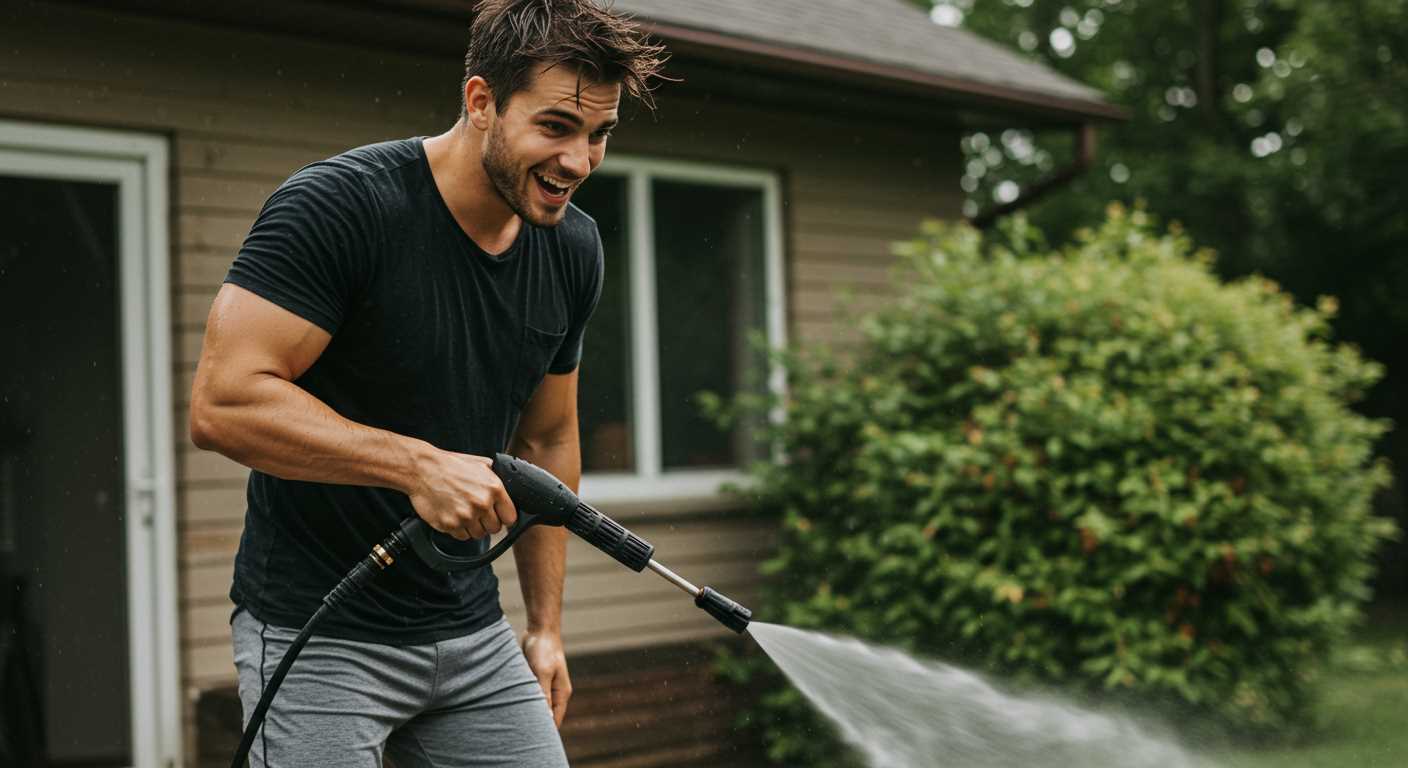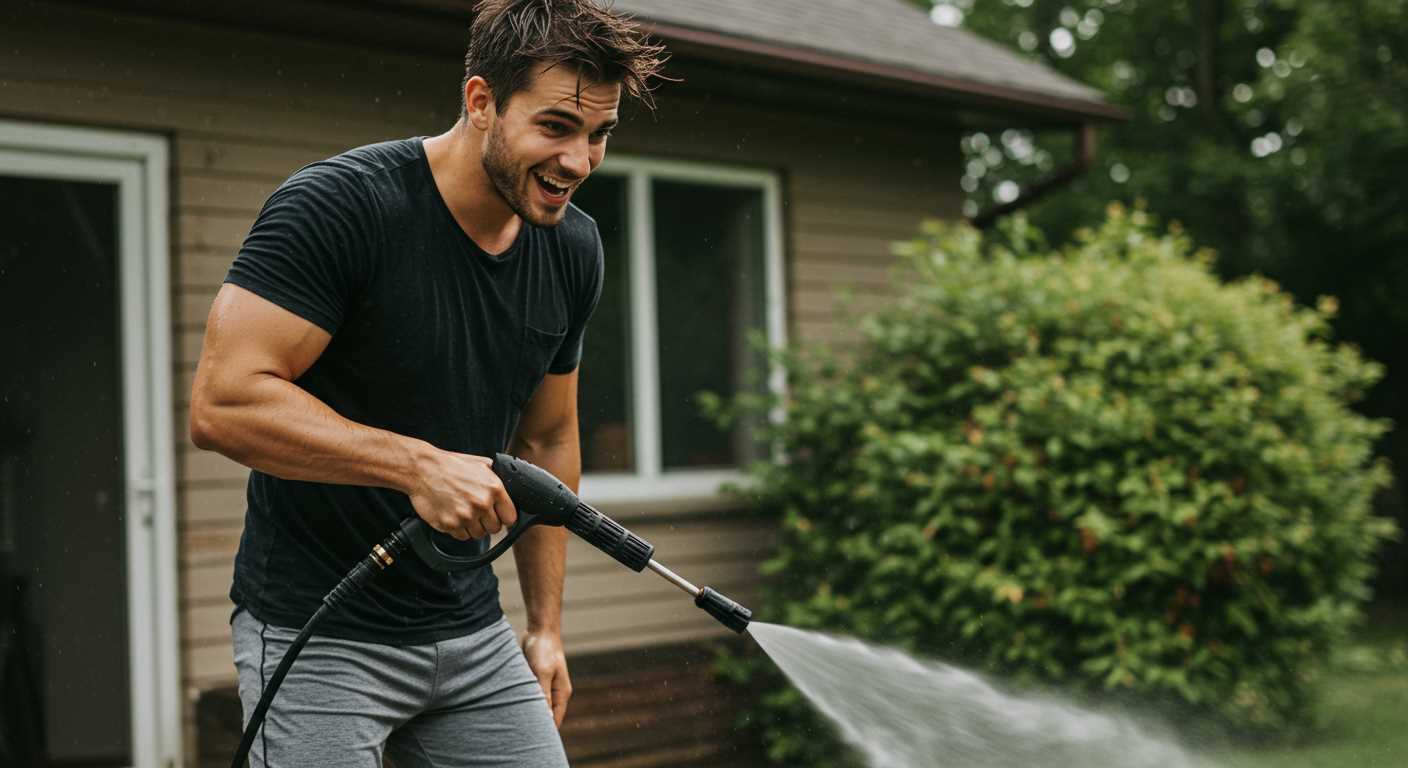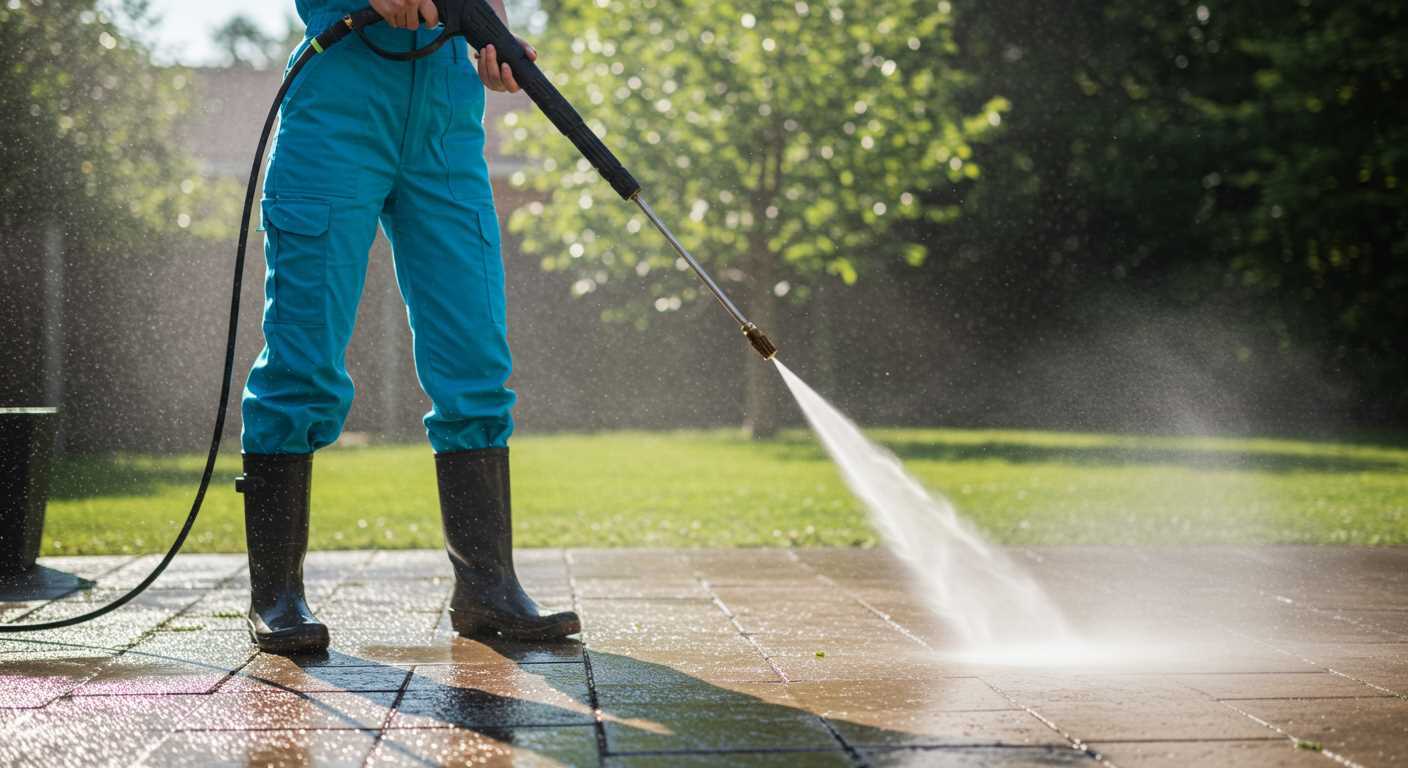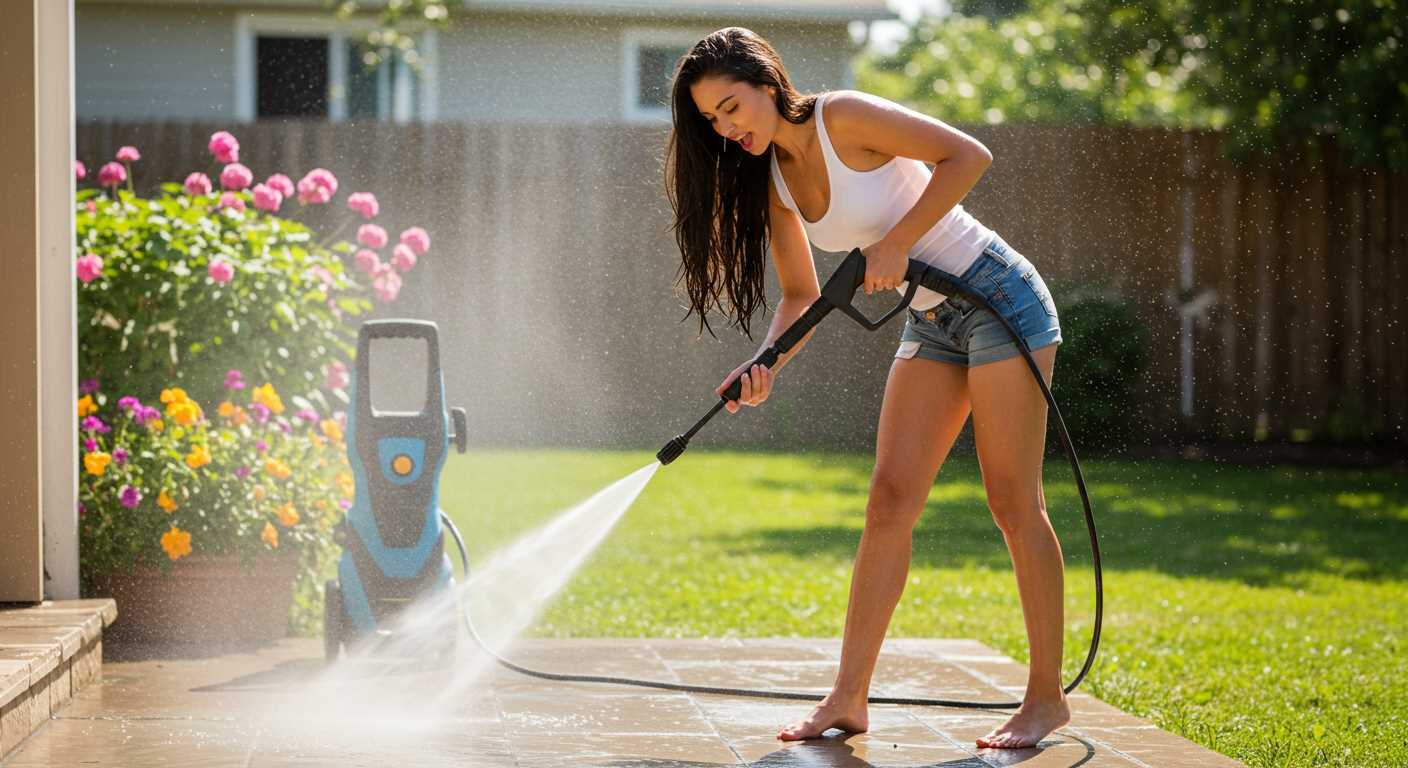




Choosing the right equipment is paramount for success in mobile cleaning. I recommend starting with a robust, reliable unit that can handle various tasks, from residential jobs to commercial projects. A solid frame is essential; it should be constructed from durable materials to endure the rigours of transportation and daily use.
Next, consider your water source and storage solutions. A tank that holds at least 200 litres ensures you won’t run short during lengthy jobs. I learned this the hard way during my first week on the job–running out of water in the middle of a driveway cleaning is not ideal. Incorporating a pump system that allows for quick refills from external sources can save you time and hassle.
Don’t overlook the importance of organisation. Utilising storage compartments for hoses, nozzles, and detergents will keep your equipment tidy and easily accessible. I often found myself frustrated searching for the right nozzle amidst a tangled mess. A well-organised setup not only saves time but also reflects professionalism to your clients.
Finally, ensure your trailer has proper lighting and safety features. I can’t stress enough how vital this is for night jobs or in low-light conditions. Having reflective tape and working lights can prevent accidents and enhance visibility. In my experience, a well-lit setup is not just about safety; it also instills confidence in your clients, knowing you’re prepared for any situation.
Setting Up Your Mobile Cleaning Unit
Begin with a solid platform; a robust trailer that can handle the weight of your equipment and supplies is non-negotiable. I learned the hard way that lightweight options may compromise stability during transit. Opt for a heavy-duty model that can support multiple items without bending or swaying on the road.
Next, focus on the layout. Allocate zones for your cleaning machine, water tank, and additional gear. I recommend a designated area for chemicals, ensuring they’re stored securely to avoid spills. Using non-slip mats can really help keep everything in place during transportation.
For power, ensure you have a reliable generator or dual battery setup. On one occasion, I underestimated power requirements and ended up with a flat battery halfway through a job. Trust me, it’s best to overestimate your needs to maintain consistent performance.
Water supply is crucial. A tank with at least 200 litres is ideal for most tasks. I once opted for a smaller tank on a long job and regretted it, needing to find a water source midway through. Make sure to install a clear connection for easy refilling.
Don’t overlook safety features. Proper ventilation is key to prevent harmful fumes from accumulating. In my experience, installing a fire extinguisher and first-aid kit has proven invaluable for peace of mind. Always adhere to safety regulations in your area.
Finally, consider branding. A well-designed wrap can turn your unit into a mobile advertisement. I’ve seen the difference it makes–customers are more likely to trust a professional appearance. Make sure your business name and contact details are clearly visible.
Selecting the Right Trailer for Your Pressure Washer
Choose a robust and durable model that can support your cleaning equipment and additional supplies. A trailer with a weight capacity of at least 1,500 kg is advisable, ensuring it can accommodate a high-performance machine and water tank.
Consider dimensions; a compact yet spacious design allows for easy manoeuvrability while providing enough room for all necessary components. Look for a trailer with a length of about 10 to 12 feet, which is usually sufficient for most setups.
| Feature | Recommendation |
|---|---|
| Weight Capacity | Minimum 1,500 kg |
| Length | 10 – 12 feet |
| Material | Steel or Aluminium |
| Braking System | Electric or Hydraulic |
| Features | Toolbox, storage racks |
Opt for a material that withstands harsh conditions like steel or aluminium. Steel offers superior strength, while aluminium is lighter and resistant to rust. A reliable braking system–either electric or hydraulic–ensures safety during transport.
Incorporating storage solutions like toolboxes or racks can greatly enhance organisation. This way, you’ll have quick access to hoses, nozzles, and other accessories without clutter. If you’re unsure about the right machine, check out this pressure washer for air conditioner guide for additional insights.
Lastly, ensure your chosen model allows for easy loading and unloading. A ramp or low-profile design can make a significant difference, especially when handling heavy equipment. As someone who has worked with various setups, these small details can save a lot of time and effort on the job.
For more tips on maintenance, consider this how to clean the plastic strip on a shower door ultimate guide to keep your equipment in top condition.
Choosing the Necessary Equipment and Accessories
Investing in quality tools can greatly enhance your cleaning business. I remember the first time I equipped my mobile unit; I was surprised how the right accessories made all the difference. Here’s what you should consider when selecting gear for your setup.
High-Pressure Equipment
Opt for a robust unit that meets your workload demands. I’ve found that electric models can be convenient for smaller jobs, while gas-powered machines excel in heavy-duty tasks. Look for machines with adjustable pressure settings; this flexibility allows you to handle a variety of surfaces and cleaning tasks effectively. High flow rates, typically measured in litres per minute (LPM), are equally important. A higher LPM translates to quicker cleaning times, which can significantly improve efficiency during busy days.
Complementary Accessories
Beyond the main unit, several accessories can elevate your service. A good quality hose, ideally 50 feet or longer, allows for greater reach without needing to move your setup frequently. Invest in various nozzles, as they cater to different cleaning needs–from gentle rinses to powerful blasts. Don’t forget about surface cleaners; they are a game changer for large flat areas like driveways or patios. Lastly, a reliable water tank or storage solution is necessary for jobs where access to a water supply isn’t guaranteed. A tank with at least 100 gallons should suffice for most tasks, ensuring you’re ready for anything.
Installing the Pressure Cleaner and Water Tank Securely
To ensure a safe and efficient setup, secure both the cleaner and the water reservoir using appropriate fasteners and brackets. I’ve found that dedicated mounting systems are worth the investment.
- Choose the Right Mounting Bracket: Look for brackets designed for the specific model of your cleaner. They provide a snug fit and reduce vibrations during transport.
- Drill Holes for Bolts: Use a drill to create holes in the trailer floor, ensuring they are aligned with the bracket holes. Use stainless steel bolts for durability and resistance to rust.
- Use Lock Washers: When securing the bolts, employ lock washers to prevent loosening from vibrations. This is a simple step that can save you from future headaches.
For the water tank, I recommend the following:
- Positioning: Place the tank as low as possible on the trailer to maintain balance. This will enhance stability, especially when driving on uneven surfaces.
- Secure with Straps: Heavy-duty ratchet straps are effective for holding the tank in place. Ensure they are tight, but not so tight that they damage the tank.
- Check for Leaks: After installation, fill the tank and check for leaks. Address any issues immediately to avoid problems during operation.
Lastly, always test the setup before heading out on a job. A quick check can prevent mishaps on site. Trust me, it’s much easier to troubleshoot in your driveway than at a client’s location.
Setting Up the Plumbing and Electrical Systems
Start with the water supply line. Use high-quality hoses that can withstand the pressure and temperature. I always recommend connecting a 3/4-inch hose to ensure a strong flow. Use quick-connect fittings for easy attachment and detachment. Test the connections for leaks before moving on.
For the water tank, make sure to install a bulkhead fitting at the bottom for gravity feed. This allows water to flow freely to the cleaning unit without straining the pump. A simple valve can help you control the water intake, preventing overflow or spills.
Electrical Configuration
When it comes to the electrical system, safety is paramount. Use a dedicated circuit for your machine to avoid overloading. I suggest installing a 30-amp breaker for 240V machines. Always use heavy-duty extension cords rated for outdoor use and the proper gauge for your power needs. A 10-gauge cord is a good choice for longer distances.
Consider adding a GFCI outlet near your setup. This provides an extra layer of protection against electrical shocks. I’ve seen too many setups without this, and it’s a risk you shouldn’t take. Also, keep your connections dry and away from water sources to prevent short circuits.
Final Checks
After installation, double-check all connections. Run the system for a few minutes to ensure everything is functioning smoothly. Listen for unusual noises or vibrations–these can indicate issues with the fittings or power supply. If you encounter problems, troubleshoot each section methodically to isolate the cause.
With proper plumbing and electrical installations, your mobile cleaning unit will operate efficiently and safely, allowing you to focus on delivering top-quality service to your clients.
Ensuring Compliance with Safety Regulations and Guidelines
Start by familiarising yourself with local laws concerning equipment operation. Each region has specific regulations that govern the use of high-powered cleaning devices, including noise levels and environmental impact. I recall a time when I underestimated local restrictions; I faced fines for exceeding noise limits during early morning operations. Always consult your local council or governing body for precise requirements.
Equipment Safety Standards
Invest in equipment that meets recognised safety standards, such as those set by ANSI or OSHA. This ensures not only your protection but also that of your clients. I made it a habit to check for compliance markings on every device I purchased. One incident involved a faulty hose that didn’t meet the necessary specifications, resulting in a dangerous situation. Avoid shortcuts–always choose certified products.
Personal Protective Equipment (PPE)
Utilising appropriate PPE is non-negotiable. Always wear safety goggles, gloves, and non-slip footwear. I’ve had moments where a simple pair of safety glasses saved me from serious eye injury due to flying debris. Additionally, consider ear protection when operating machinery for extended periods. I learnt the hard way about the importance of protecting hearing after years of exposure without adequate safeguards.
FAQ:
What tools and equipment do I need to set up a pressure washer trailer?
To set up a pressure washer trailer, you will need several key components. Firstly, a trailer that can accommodate your pressure washing equipment is necessary. You will also require a pressure washer, which can be either electric or petrol-powered, depending on your preference and the jobs you plan to tackle. Additionally, hoses, nozzles, and spray guns are important for versatility in your cleaning tasks. Don’t forget to include a water tank if your pressure washer does not have a built-in one. Lastly, safety gear such as gloves and goggles should be considered to protect yourself during use.
How can I ensure my pressure washer trailer is safe and compliant with regulations?
To ensure your pressure washer trailer is safe and compliant, start by checking local regulations regarding trailer modifications and use. Ensure the trailer is roadworthy, with functioning lights and brakes. You should also secure all equipment properly to prevent any movement during transit. Additionally, consider adding safety features such as a fire extinguisher and first aid kit. Regularly inspect your trailer and equipment for wear and tear to maintain safety standards. Keeping documentation of inspections and compliance checks can also be beneficial.
What are the best practices for maintaining a pressure washer trailer?
Maintaining a pressure washer trailer involves several best practices. Regularly check the pressure washer for any signs of wear, such as leaks or damaged hoses, and perform routine maintenance as per the manufacturer’s guidelines. Clean the trailer after each use to prevent buildup of dirt and grime, which can lead to rust. Ensure that all connections are tight and secure to avoid any accidents. It’s also wise to check the trailer’s tyres and brakes frequently to ensure they are in good condition for safe travel.
Can I customise my pressure washer trailer for specific jobs?
Yes, customising your pressure washer trailer for specific jobs is quite common and can enhance its functionality. For instance, you can add additional storage for different types of nozzles and cleaning solutions tailored to particular surfaces or tasks, such as roof cleaning or vehicle detailing. You might also consider installing a larger water tank for extended jobs or incorporating a generator if you plan to work in areas without power. Custom features can improve efficiency and allow you to tackle a wider range of projects.






.jpg)


